Abstract
1. The effects of amitriptyline, protriptyline, protriptyline, and a chemically related potential antidepressant, BW247, on performance tests and subjective ratings were studied. 2. Two groups of twelve healthy subjects received drugs and lactose dummy in identical capsules at weekly intervals according to a balanced design, under double-blind conditions, and with standarized tests and environment. 3. Amitriptyline produced the most marked effects, with significant (P less than 0.05) impairment in auditory vigilance after 6.25 mg. Auditory reaction time, tapping rate, arithmetic, and digit symbol substitutions were impaired by amitriptyline 12.5 and 25 mg and all doses produced increased ratings of mental sedation. The effects began 1.5 h after drug and lasted approximately 5 h. 4. Nortriptyline produced fewer effects which were later in onset. Tapping at 1.8 h and auditory vigilance at 3.5 to 4.5 h were impaired by nortriptyline 25 mg whereas reaction time was prolonged by both doses at 5 h. No change in rating of mental sedation occurred. 5. No significant change in performance or subjective ratings followed protriptyline 10 mg or BW247, 12.5 and 25 mg. 6. The findings are discussed in relation to the presence of secondary and tertiary amines on the side chain of the compounds, and their relative abilities to block neuronal uptake of noradrenaline and 5-hydroxytryptamine.
Full text
PDF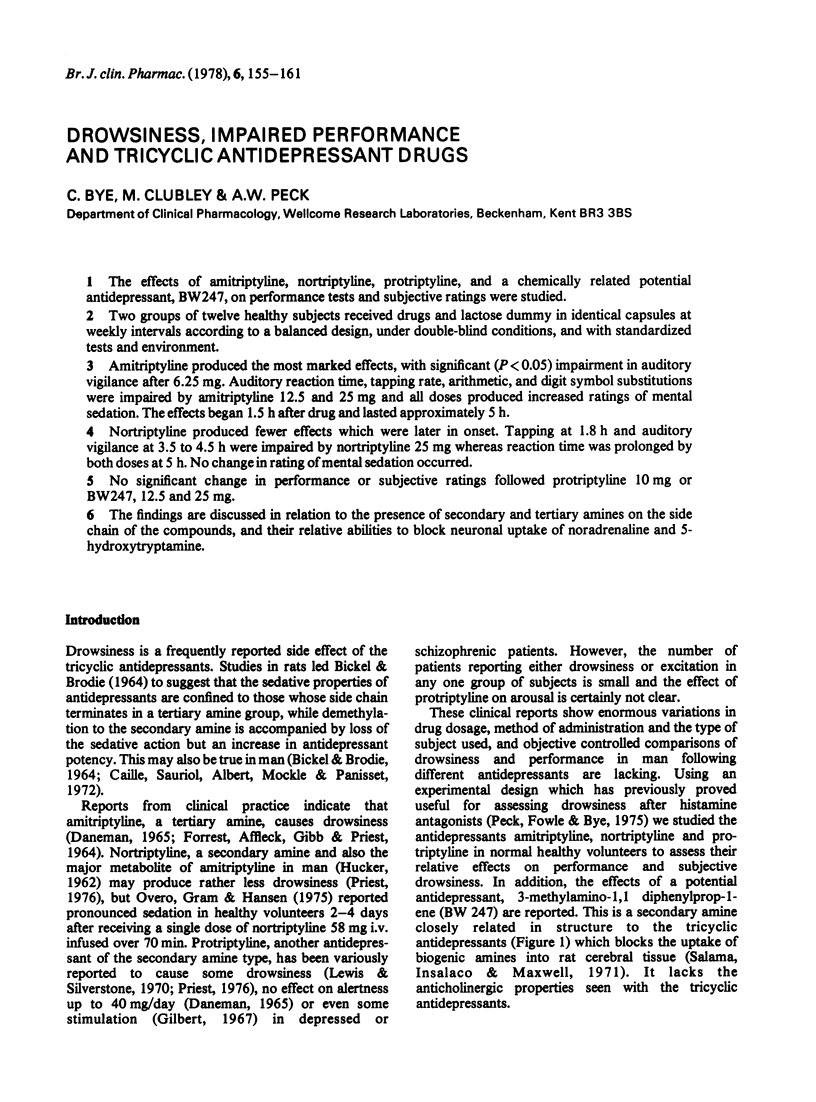
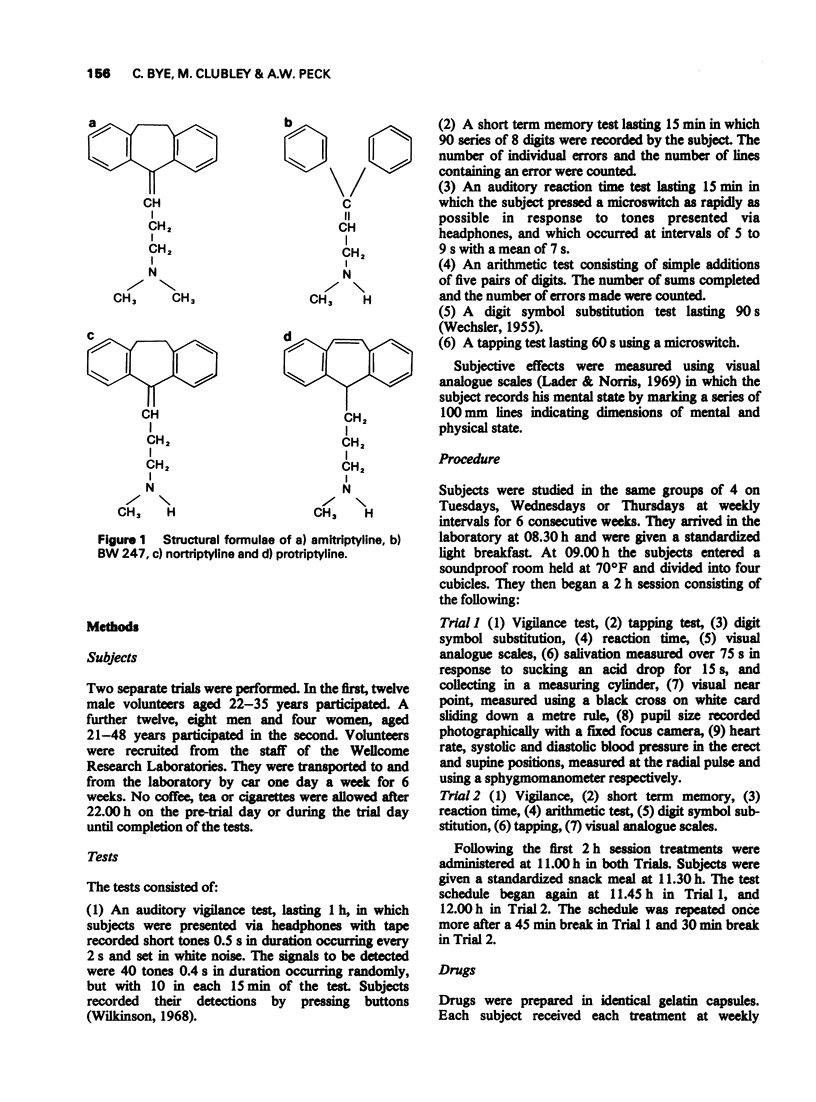
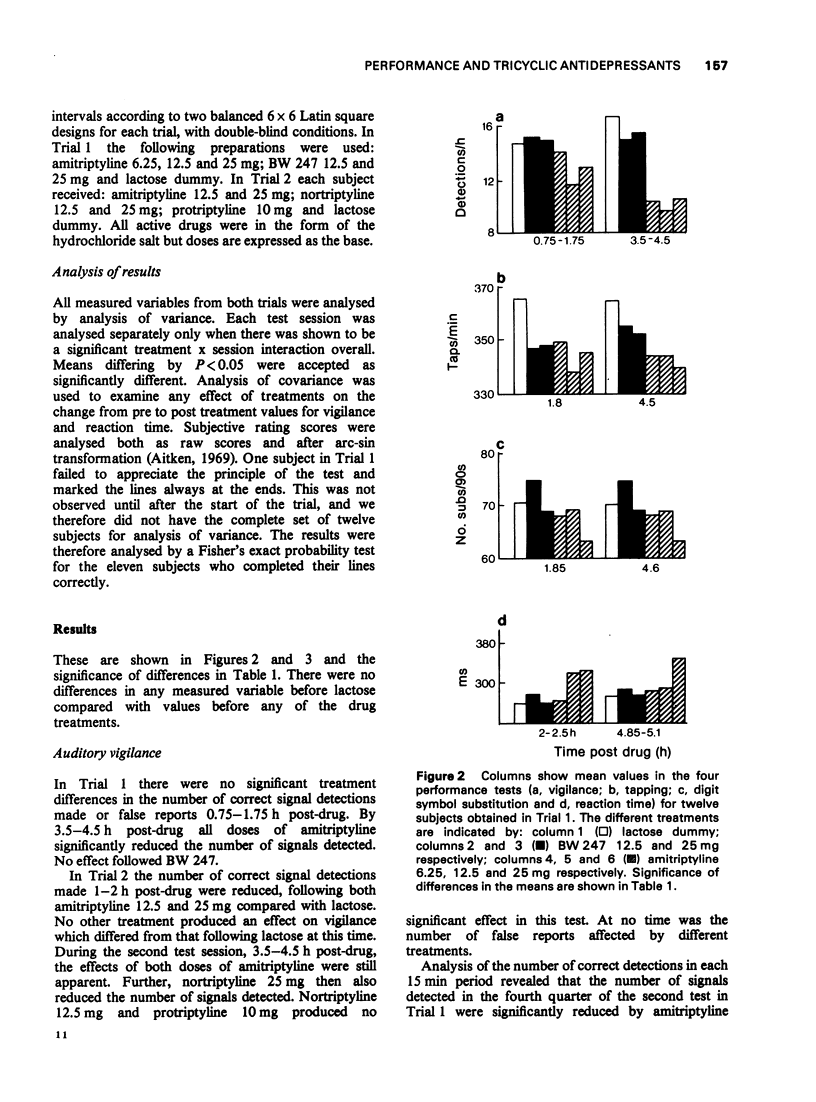
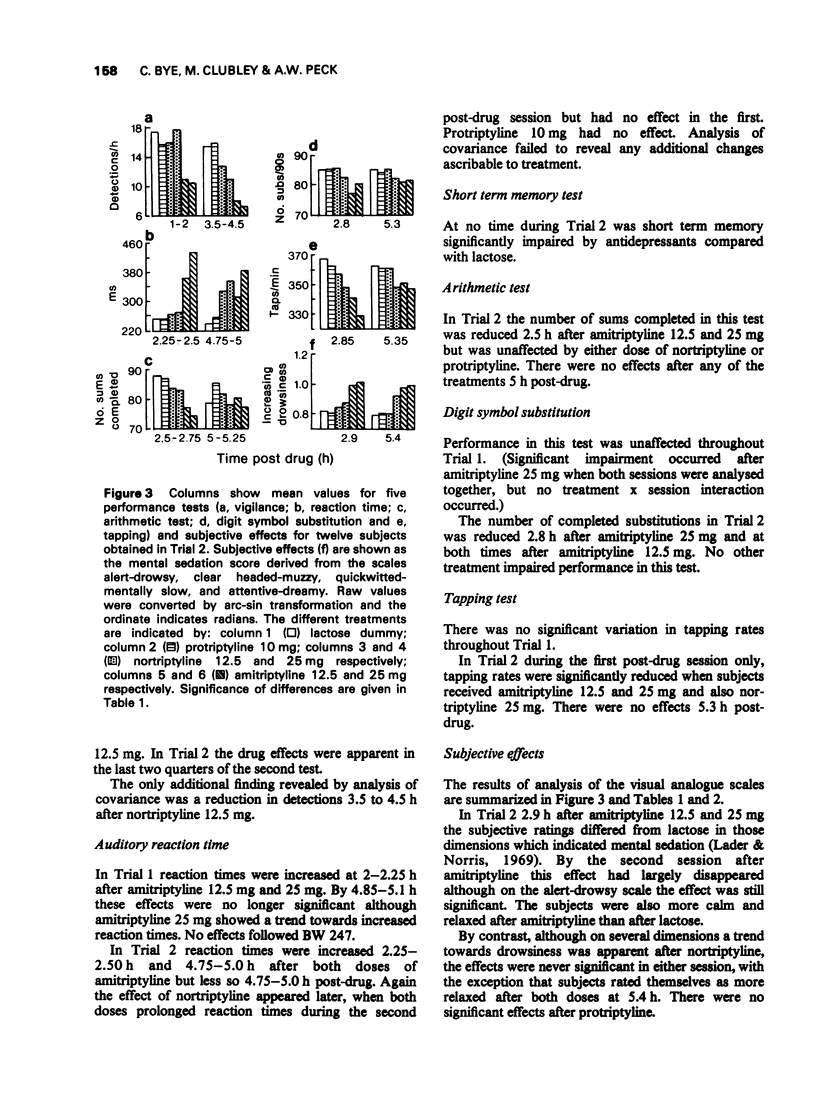

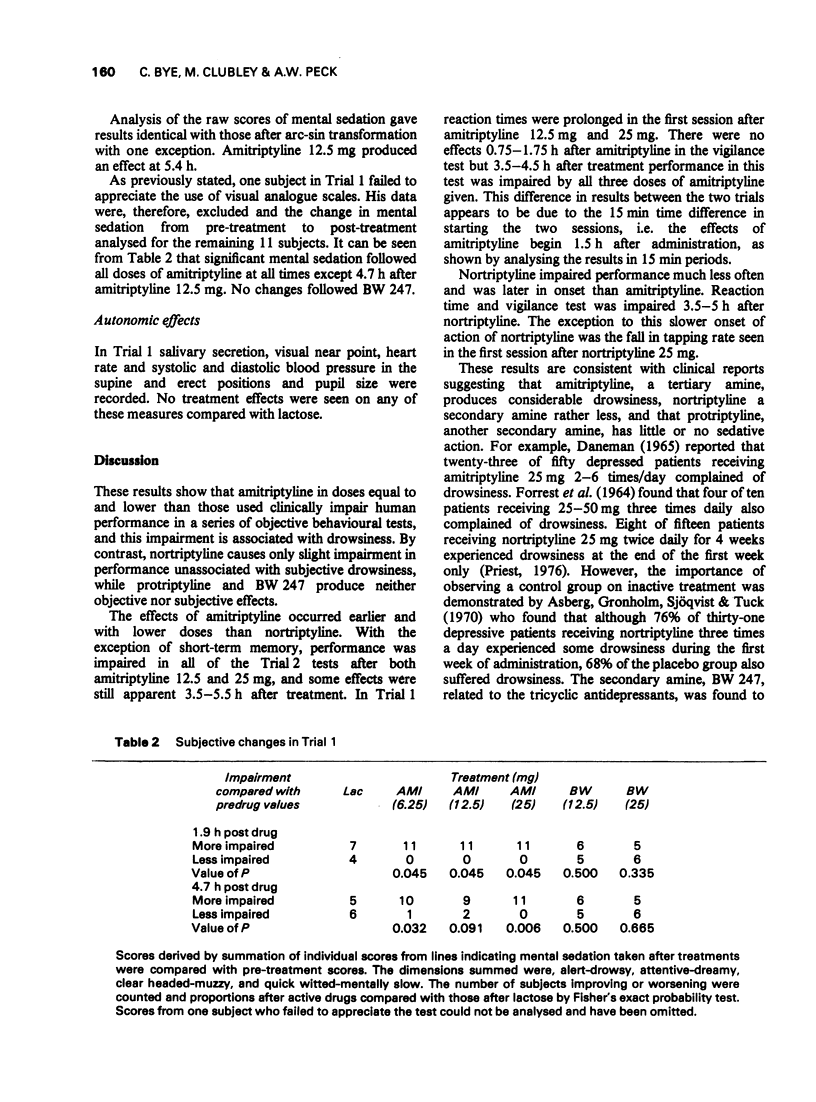
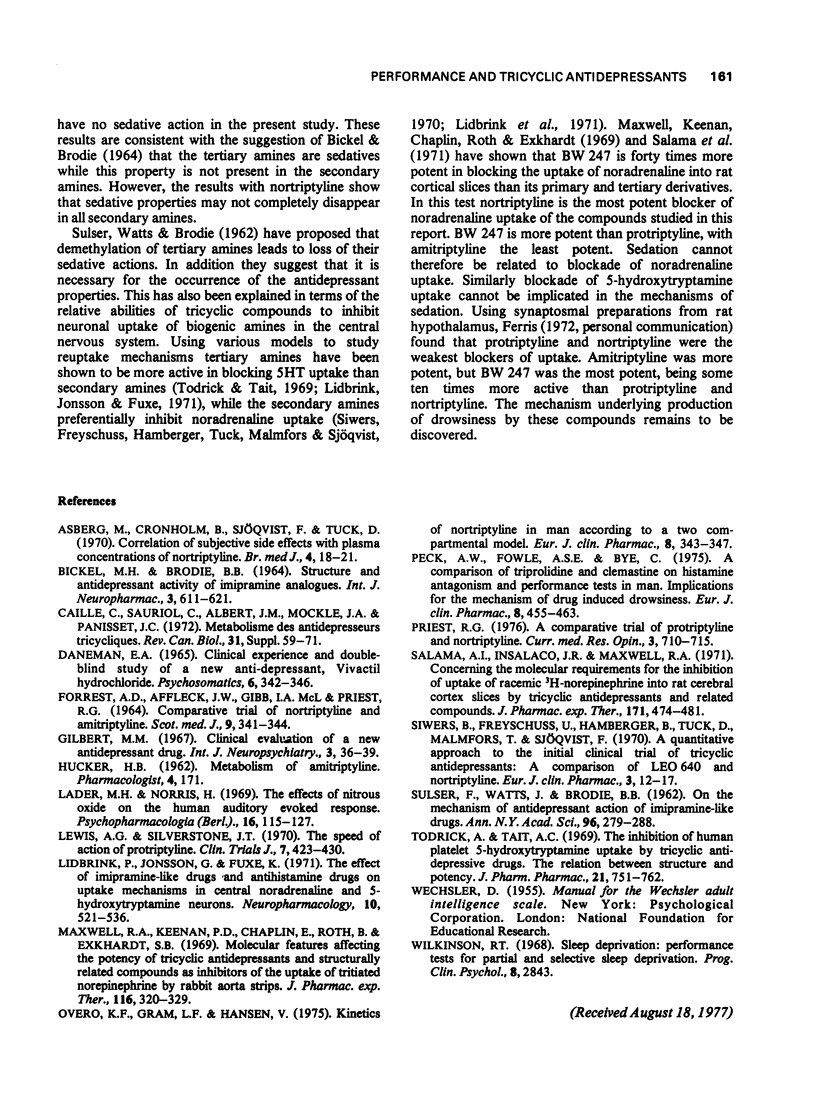
Selected References
These references are in PubMed. This may not be the complete list of references from this article.
- Asberg M., Cronholm B., Sjöqvist F., Tuck D. Correlation of subjective side effects with plasma concentrations of nortriptyline. Br Med J. 1970 Oct 3;4(5726):18–21. doi: 10.1136/bmj.4.5726.18. [DOI] [PMC free article] [PubMed] [Google Scholar]
- BICKEL M. H., BRODIE B. B. STRUCTURE AND ANTIDEPRESSANT ACTIVITY OF IMIPRAMINE ANALOGUES. Int J Neuropharmacol. 1964 Dec;3:611–621. doi: 10.1016/0028-3908(64)90086-3. [DOI] [PubMed] [Google Scholar]
- Caille G., Sauriol C., Albert J. M., Mockle J. A., Panisset J. C. Metabolisme des antideresseurs tricycliques. Rev Can Biol. 1972;31(Suppl):59–71. [PubMed] [Google Scholar]
- Daneman E. A. Clinical experience and a double-blind study of a new anti-depressant, vivactil hydrochloride. Psychosomatics. 1965 Sep-Oct;6(5):342–346. doi: 10.1016/s0033-3182(65)72253-6. [DOI] [PubMed] [Google Scholar]
- FORREST A. D., AFFLECK J. W., GIBB I. A., PRIEST R. G. COMPARATIVE TRIAL OF NORTRIPTYLINE AND AMITRIPTYLINE. Scott Med J. 1964 Aug;9:341–344. doi: 10.1177/003693306400900804. [DOI] [PubMed] [Google Scholar]
- Lader M., Norris H. The effects of nitrous oxide on the human auditory evoked response. Psychopharmacologia. 1969;16(2):115–127. doi: 10.1007/BF00403614. [DOI] [PubMed] [Google Scholar]
- Lidbrink P., Jonsson G., Fuxe K. The effect of imipramine-like drugs and antihistamine drugs on uptake mechanisms in the central noradrenaline and 5-hydroxytryptamine neurons. Neuropharmacology. 1971 Sep;10(5):521–536. doi: 10.1016/0028-3908(71)90018-9. [DOI] [PubMed] [Google Scholar]
- Maxwell R. A., Keenan P. D., Chaplin E., Roth B., Eckhardt S. B. Molecular features affecting the potency of tricyclic antidepressants and structurally related compounds as inhibitors of the uptake of tritiated norepinephrine by rabbit aortic strips. J Pharmacol Exp Ther. 1969 Apr;166(2):320–329. [PubMed] [Google Scholar]
- Overo K. F., Gram L. F., Hansen V. Kinetics of nortriptyline in man according to a two compartment model. Eur J Clin Pharmacol. 1975 Jun 13;8(5):343–347. doi: 10.1007/BF00562660. [DOI] [PubMed] [Google Scholar]
- Peck A. W., Fowle A. S., Bye C. A comparison of triprolidine and clemastine on histamine antagonism and performance tests in man: implications for the mechanism of drug induced drowsiness. Eur J Clin Pharmacol. 1975 Aug 14;8(6):455–463. doi: 10.1007/BF00562321. [DOI] [PubMed] [Google Scholar]
- SULSER F., WATTS J., BRODIE B. B. On the mechanism of antidepressant action of imipraminelike drugs. Ann N Y Acad Sci. 1962 Jan 13;96:279–288. doi: 10.1111/j.1749-6632.1962.tb50122.x. [DOI] [PubMed] [Google Scholar]
- Salama A. I., Insalaco J. R., Maxwell R. A. Concerning the molecular requirements for the inhibition of the uptake of racemic 3 H-norepinephrine into rat cerebral cortex slices by tricyclic antidepressants and related compounds. J Pharmacol Exp Ther. 1971 Sep;178(3):474–481. [PubMed] [Google Scholar]
- Todrick A., Tait A. C. The inhibition of human platelet 5-hydroxytryptamine uptake by tricyclic antidepressive drugs. The relation between structure and potency. J Pharm Pharmacol. 1969 Nov;21(11):751–762. doi: 10.1111/j.2042-7158.1969.tb08164.x. [DOI] [PubMed] [Google Scholar]


